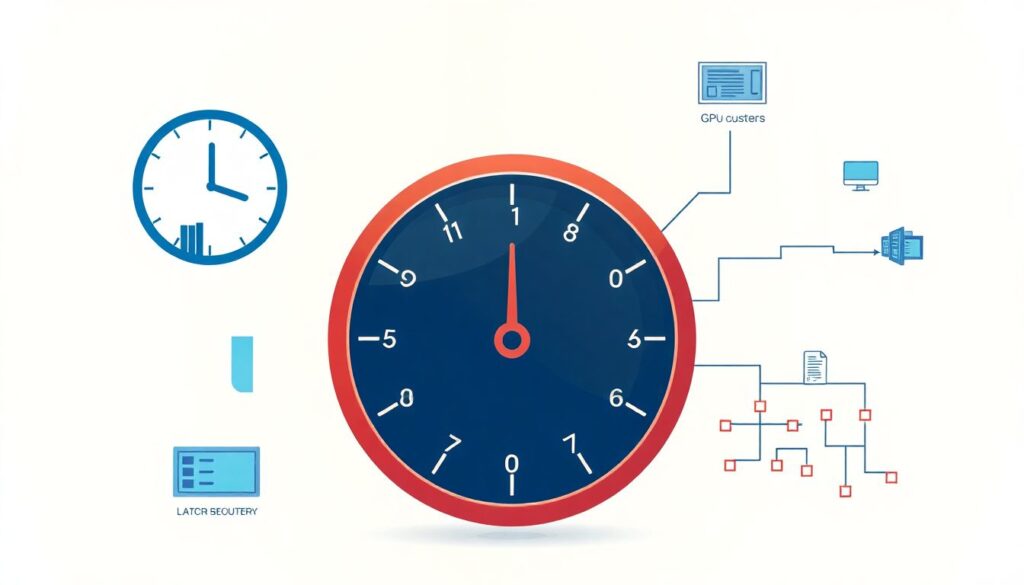Volatility Estimation in Real-Time: Techniques for Speed
Volatility estimation has always been a cornerstone of financial modeling, risk management, and algorithmic trading. But with the explosion of high-frequency data and the ever-shrinking latency windows in modern markets, speed is no longer optional — it’s survival. In this article, we dive into the evolving landscape of real-time volatility estimation, comparing traditional and modern approaches, highlighting their pros and cons, and offering unconventional strategies to push the limits of speed without sacrificing accuracy.
Classic vs Modern: A Quick Comparison

Traditional methods like GARCH (Generalized Autoregressive Conditional Heteroskedasticity) have long been the go-to for modeling volatility. They’re well-understood, statistically sound, and relatively interpretable. However, when it comes to real-time execution, they can be sluggish, especially when recalibrated frequently on streaming data.
On the flip side, modern techniques — including machine learning models, Kalman filters, and neural volatility surfaces — offer flexibility and adaptability. These models can handle non-linearity and regime shifts far better than their classical counterparts. But they come with their own baggage: computational complexity, data-hungriness, and in some cases, black-box behavior that raises eyebrows in risk committees.
Pros and Cons of Leading Techniques
Let’s break it down:
Traditional Models (e.g., GARCH, EWMA):
– ✅ Easy to implement
– ✅ Good for low-frequency data
– ❌ Poor scalability in high-frequency environments
– ❌ Struggle with structural breaks and non-stationarity
Machine Learning Models (e.g., LSTM, Random Forest):
– ✅ Capture non-linear dynamics
– ✅ Adapt to changing regimes
– ❌ Require massive training data
– ❌ Often lack interpretability
Kalman Filters and State-Space Models:
– ✅ Real-time updating capabilities
– ✅ Great for smoothing noisy signals
– ❌ Sensitive to model mis-specification
– ❌ Can be computationally intensive
Unconventional Yet Effective: Speed-First Techniques
Now let’s get creative. If you’re chasing microseconds, it’s time to think beyond the textbook.
1. Sketching Algorithms for Streaming Data
Sketching is a probabilistic data summarization technique that can be used to approximate key statistics (like variance) on the fly. Algorithms like Count-Min Sketch or HyperLogLog are already used in big data for frequency estimation — why not adapt them for financial volatility?
For example, one could maintain a rolling sketch of squared returns to estimate variance in constant time. While not perfectly accurate, the speed gain is dramatic — and for high-frequency trading, that’s a trade-off worth considering.
2. GPU-Accelerated Volatility Pipelines
If you’re still estimating volatility on CPUs, you’re leaving speed on the table. By offloading matrix operations and real-time filtering to GPUs, firms have reported latency reductions by factors of 10x or more. This is especially useful for neural volatility models, where parallelism is key.
Some firms are even exploring FPGAs (Field-Programmable Gate Arrays) for ultra-low-latency volatility estimation, although development complexity is a barrier.
3. Event-Driven Volatility Triggers
Instead of recalculating volatility at fixed intervals, consider an event-based system. For instance, volatility could be re-estimated only when a significant price jump or volume spike occurs — similar to how adaptive sampling works in signal processing.
This can drastically reduce unnecessary computations during quiet market periods, freeing up resources for when it really matters.
Choosing the Right Tool for the Job

There’s no one-size-fits-all solution. Your choice of technique should depend on:
– Data Frequency: Are you working with tick data or 5-minute bars?
– Latency Requirements: Microsecond trading or end-of-day risk reporting?
– Infrastructure: Do you have access to GPUs or only CPU clusters?
– Interpretability Needs: Do regulators need to understand your model?
Here’s a quick guide:
– Use EWMA or GARCH for simple, interpretable models on lower-frequency data.
– Choose Kalman filters for real-time systems with noisy signals.
– Opt for LSTM or GRU networks when capturing complex patterns in high-frequency time series.
– Explore sketching or event-driven triggers when latency is mission-critical.
What’s Trending in 2025?

Looking ahead, several trends are shaping the future of real-time volatility estimation:
– Hybrid Models: Combining traditional econometrics with machine learning to get the best of both worlds.
– Explainable AI (XAI): As black-box models become more prevalent, so does the demand for interpretability tools.
– Edge Computing: Running volatility models directly on trading hardware to minimize data transmission delays.
– Quantum-Inspired Algorithms: Still experimental, but promising for optimization-heavy problems like volatility clustering.
Final Thoughts
Real-time volatility estimation is no longer a luxury — it’s a necessity. Whether you’re managing intraday risk or powering a latency-sensitive trading strategy, the right technique can make or break your edge. Don’t be afraid to experiment with unconventional approaches. Sometimes, the fastest path to insight isn’t the most obvious one.

